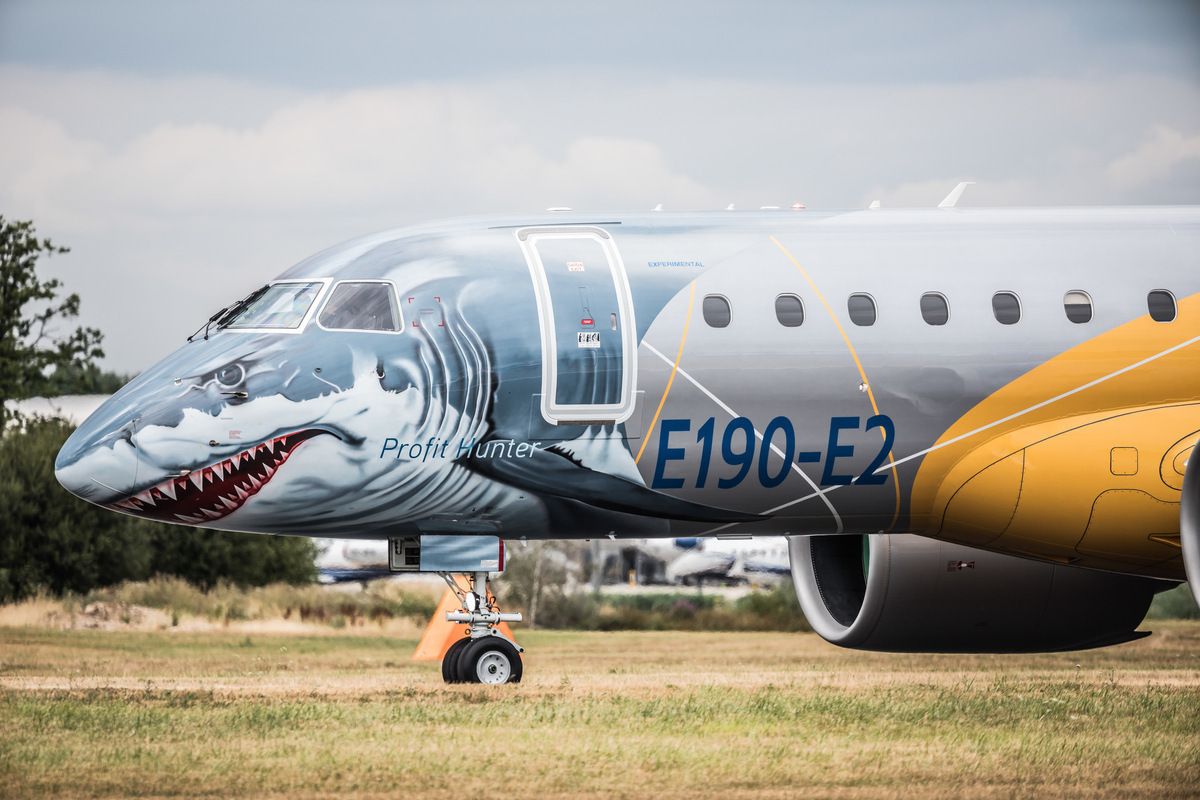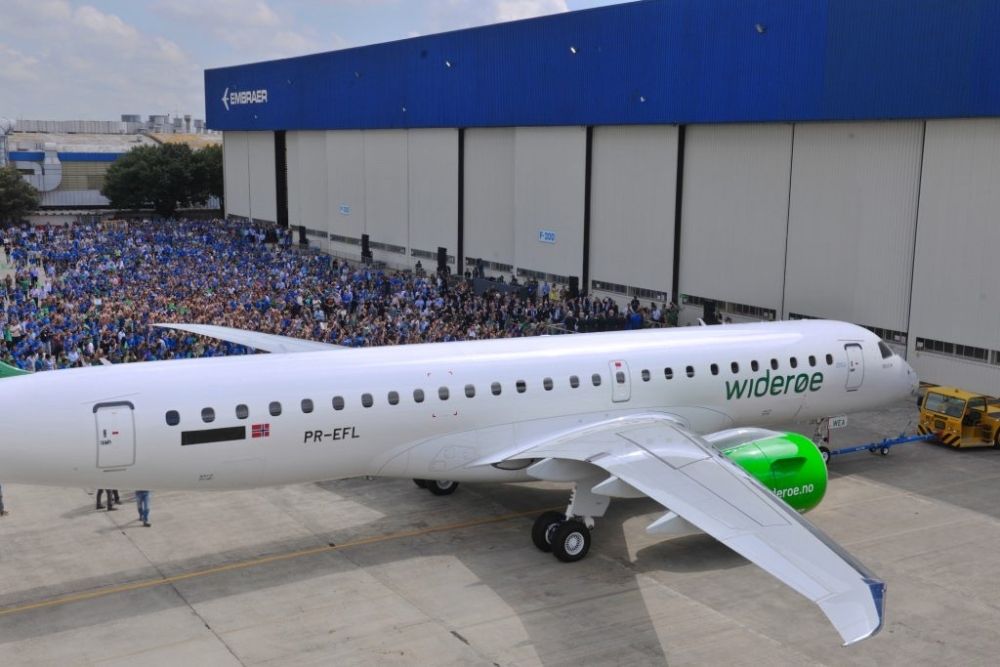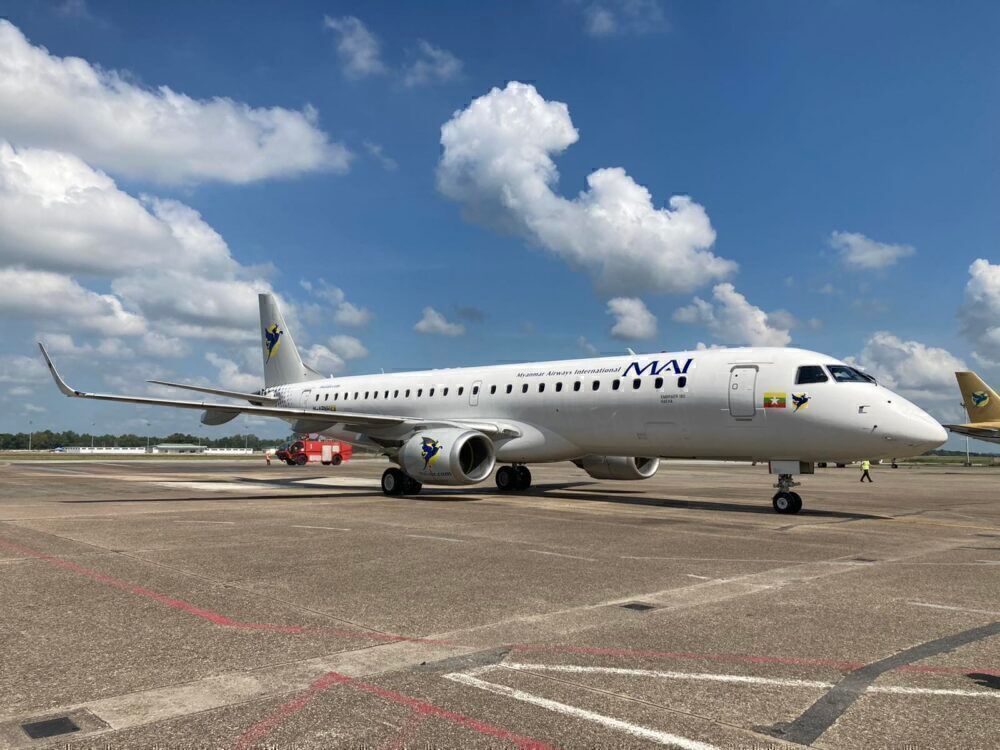It has now been three years since the Embraer E190-E2 was first certified. The plane forms part of a range of aircraft following on from the original popular E-Jet series. However, how does the jet compare to its predecessor, the initial E190?
The major upgrade
Notably, the E190-E2 is primarily a re-engined model of its predecessor. The Pratt & Whitney PurePower Geared Turbofan engines replaced the General Electric units. This aspect was part of a key area of advancement with E2, which is in regard to efficiency.
Following final flight tests of the E190-E2, at the beginning of 2018, Embraer highlighted that the aircraft proved to have 1.3% better fuel consumption than expected. Moreover, the progress is a 17.3% improvement when up against the E190.
Furthermore, the new engine’s fan diameter is over 20 inches (50 cm) wider. Subsequently, the nose wheel undercarriage had to be extended.
The manufacturer also highlighted that the E190-E2 would become the most environmentally friendly plane in its segment, touting the lowest level of external noise and emissions. The company added that the cumulative margin to ICAO Stage IV noise limit “increases from 17 to 20 EPNdB, which results in 2 EPNdB better than its direct competitor.”
Additional advantages
Embraer also emphasized general improvements across the board. From range to maintenance costs, there are benefits to be had with the upgrade.
“Flight test results also confirmed the E190-E2 to be better than its original specification in takeoff performance. The aircraft’s range from airports with hot-and-high conditions, such as Denver and Mexico City, increases by 600 nm compared to current generation aircraft. Its range from airports with short runways, such as London City also increases by more than 1,000 nm allowing the aircraft to reach destinations like Moscow and the north of Africa,” Embraer shared in a statement.
“E190-E2 also becomes the aircraft with the longest maintenance intervals in the single aisle market with 10,000 flight hours for basic checks and no calendar limit in typical E-Jets utilization. This means additional 15 days of aircraft utilization in a period of ten years compared to current generation E-Jets.”
Across the spectrum
On its website, Embraer lists the range of the E190 at full capacity to be 2,450 NM / 4,537 km. Meanwhile, this figure for the E2 is 2,850 NM / 5,278 km.
Another slight difference is in the seating. The typical capacity on the E190 in a single class at 32" | 31" pitch is 100 seats. Meanwhile, this number rises to 106 on the E2 at 31” pitch. Nonetheless, both aircraft can fit 114 seats at 29" pitch.
Stay informed: Sign up for our daily and weekly aviation news digests!
Aeronewstv points out that significant differences are spotted in the cockpit of the aircraft. The latter model has up-to-date avionics, and four large screens of almost 16 inches (40 cm diagonal). These replace the older plane’s five smaller units.
Over considerable progressions involve weights and payload. There are improvements across the board here.
E190
- Max takeoff weight: 51,800 kg / 114,199 lb
- Max landing weight: 44,000 kg / 97,003 lb
- Max payload: 13,047 kg / 28,764 lb
- Maximum usable fuel (single-class at 32” pitch): 12,971 kg / 28,596 lb
E190-E2
- Max takeoff weight: 56,400 kg / 124,340 lb
- Max landing weight: 49,050 kg / 108,136 lb
- Max payload: 13,500 kg / 29,762 lb
- Maximum usable fuel (single-class): 13,690 kg / 30,181 lb
Overall, there are several upgrades to be had with the E2. The plane will undoubtedly prove to be valuable by the time this decade is over.
What are your thoughts about the differences between the Embraer E190 and E190-E2? Have you flown on the two aircraft over the years? Let us know what you think of the jets in the comment section.



